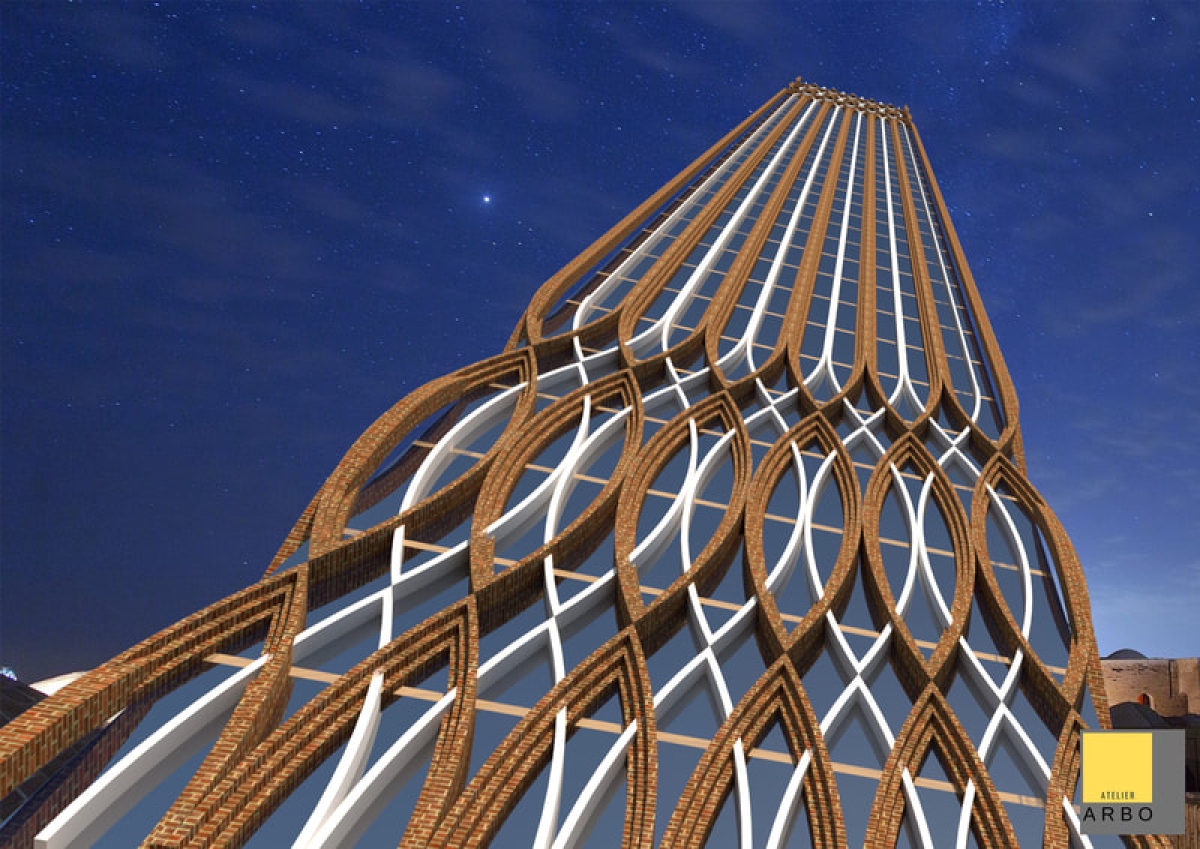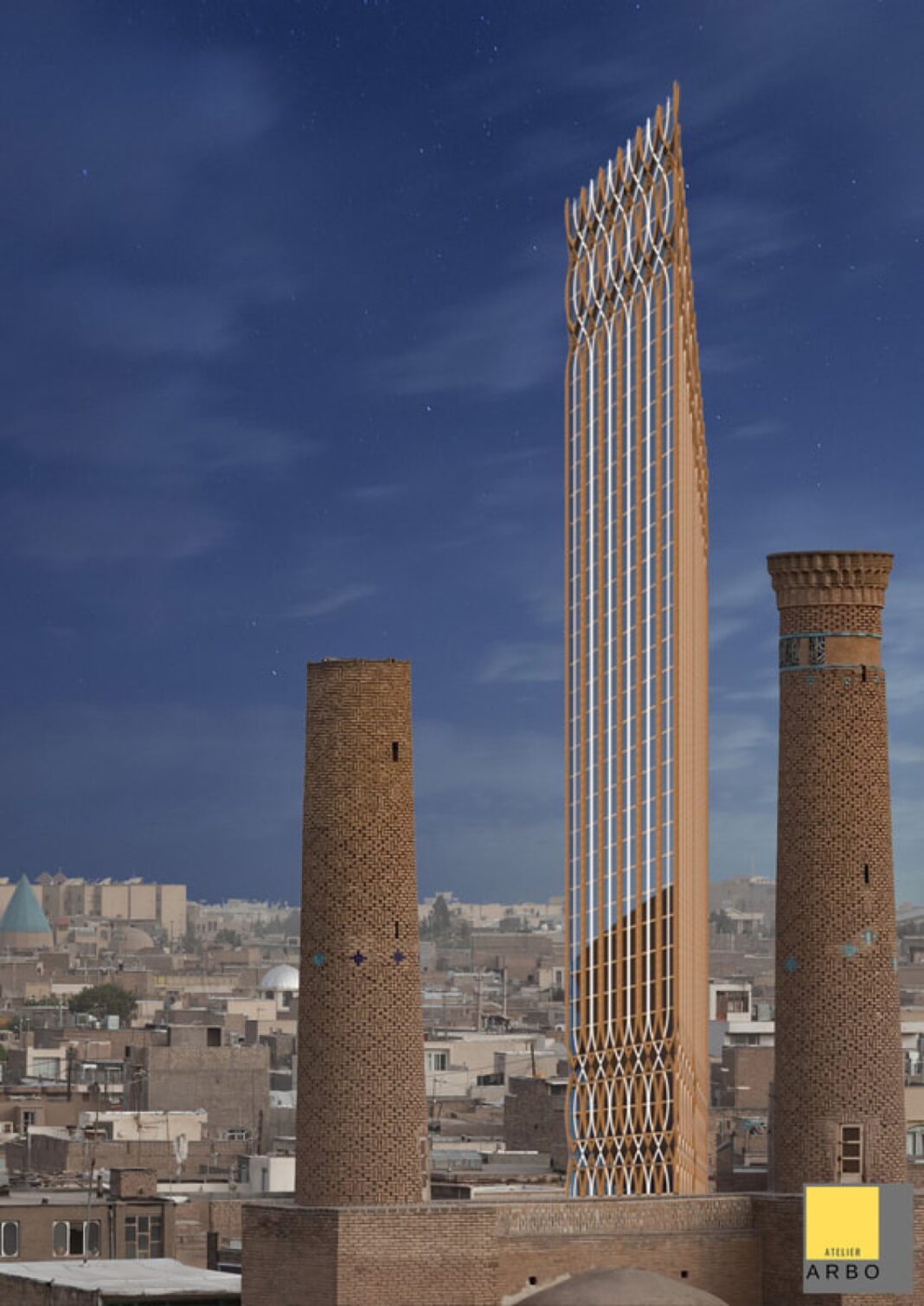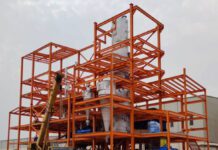For many centuries, Sana’a has been the chief economic, political, and religious centre of Yemen. Sana’a, derived from the Arabic language translates to ‘fortified place’ as it was built to withstand the harsh desert climate and provide security to its residents. The city’s unique architectural style is characterised by tall mud buildings of 4-15 stories high that are built on small sites rather than spread out across the land.
The design brief called for a residential tower that would become an iconic part of Sana’s traditional cityscape. To attract many potential buyers, the tower needed a design that would be simple and unique to the context of the city. The goal was to create a modern building that still respected the traditional house designs in the area.
The tower was designed to be 36 stories tall, making it a prominent feature in the city’s skyline. The idea was to have a slender building, with only one or two apartments on each floor, that would rise high into the sky. Each apartment hence, would feature a large guest room/living room, a powder room, a family living area, a kitchen, a master bedroom with an en-suite bathroom, and two additional bedrooms with a shared bathroom.

The design was dictated by the local building regulations, height and footprint plot limit, thus resulting in a built area of 225 sq m. The city is historically known for its traditional earth constructions, which are at the mid-range height of 10 stories, some of which are up to 300-500 years old.
The building materials were chosen to mimic those of the existing built environment while responding to the desert climate of Sana’a. To ensure the structural stability of the tower, a steel frame structure was chosen rather than a concrete frame structure. Further, the external facade is comprised of intricate patterns created by woven brick and concrete elements, paying homage to the traditional ornate windows of the area.
To bring in ample natural light while also screening the harsh glare from the sun, all fenestrations were made from solar-reflective tempered glass. The building’s curved corners create a gentler and less intimidating visual appearance as it extends beyond the mid-height structures of the city. When fully occupied, the tower will glow like a lantern at night and become an iconic addition to enhance the development of this historical city.
Rinka D’Monte, Principal Architect, Atelier ARBO OPC Pvt Ltd
The project is located in Sana’a, Yemen which is very well known all over the world for earth construction. For many years, I have been sharing the same information through many public talks and presentations. The locale is very dry, arid and hot so Earth Construction has been one of the main techniques of building construction over the centuries. The uniqueness of the place lies in the sheer density of highrise buildings and the best of all is that they are still functional and used very well. While I admire the place for its beautiful firmament, I also got an opportunity through my client to design a high-rise apartment building for 30 floors, even though the floor height is not much, this project would have been the tallest and one of the most unique structure to be added in the city of Sana’a, Yemen. The client is a trader (business) and the development was proposed by a team of local developers as a futuristic move for the city. So even though I may be nostalgic about its historic richness, I felt it was a breath of fresh air to see the advanced approach and vision which is brewing amongst the younger generation of housing builders and developers who are very keen on steel structures for high-rise residential buildings.





